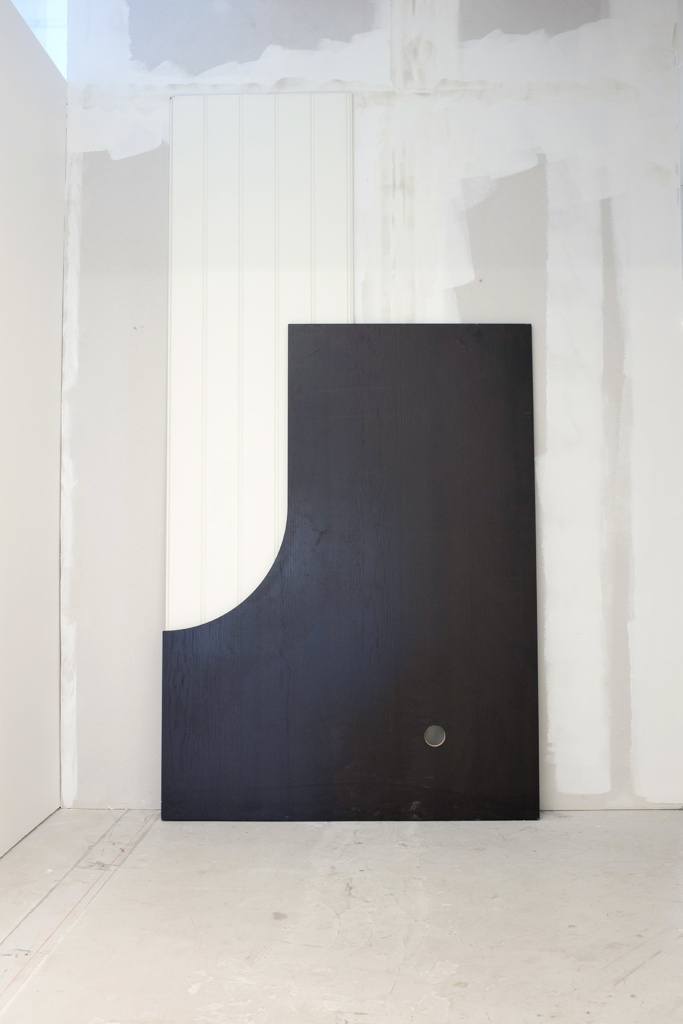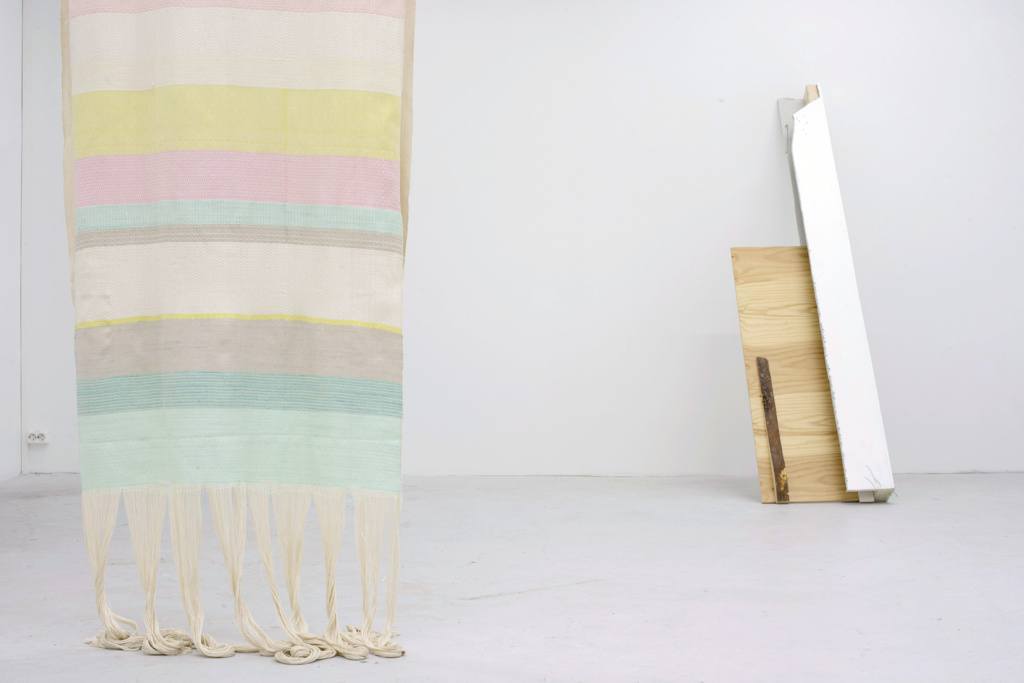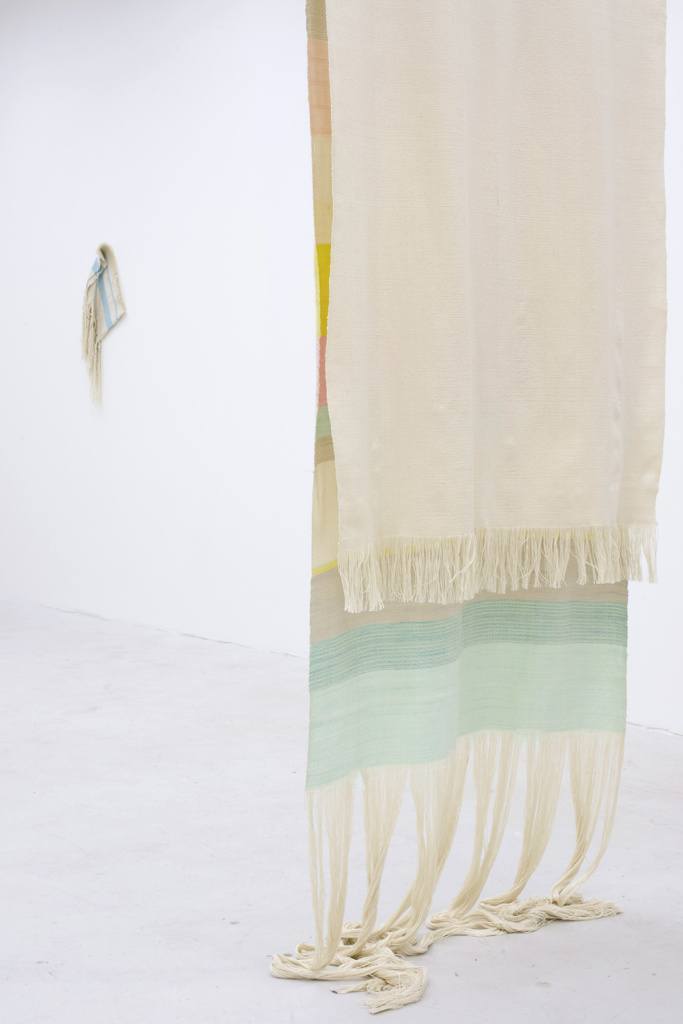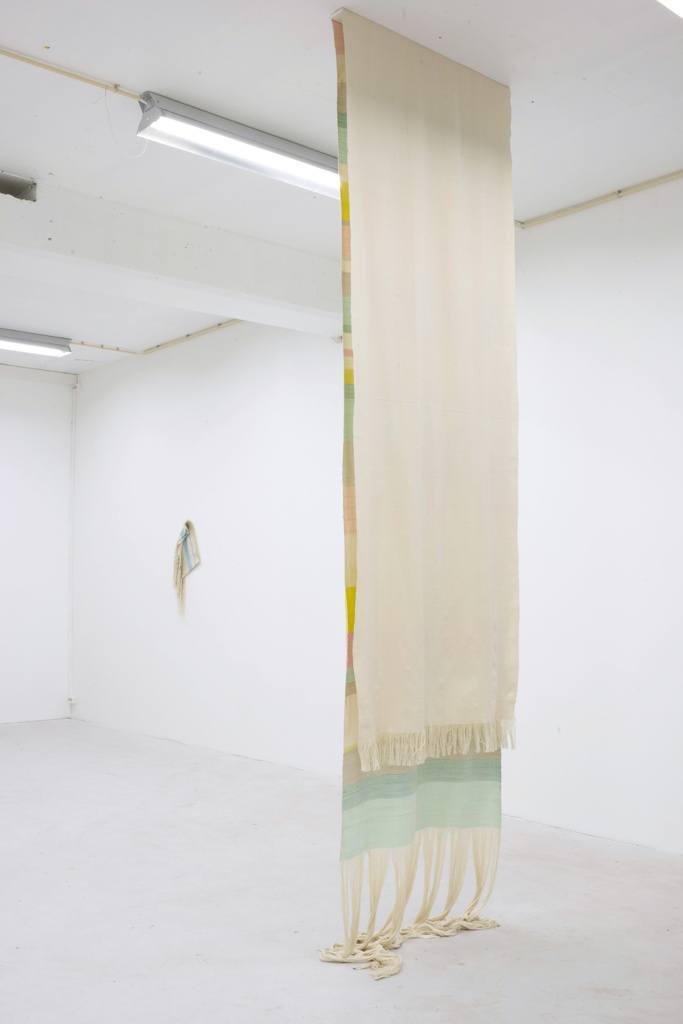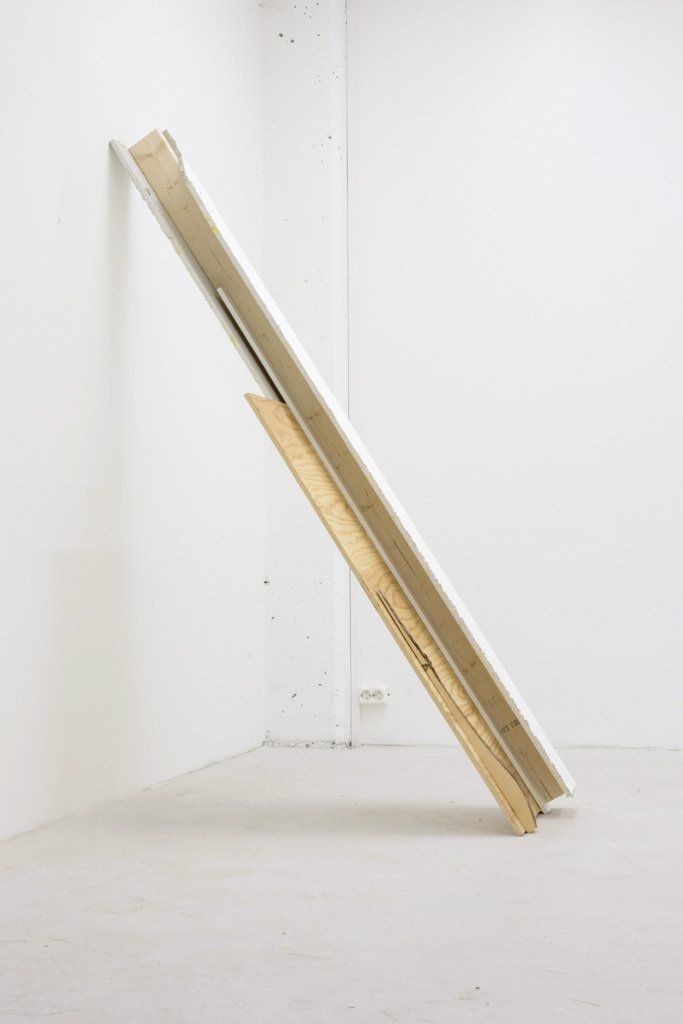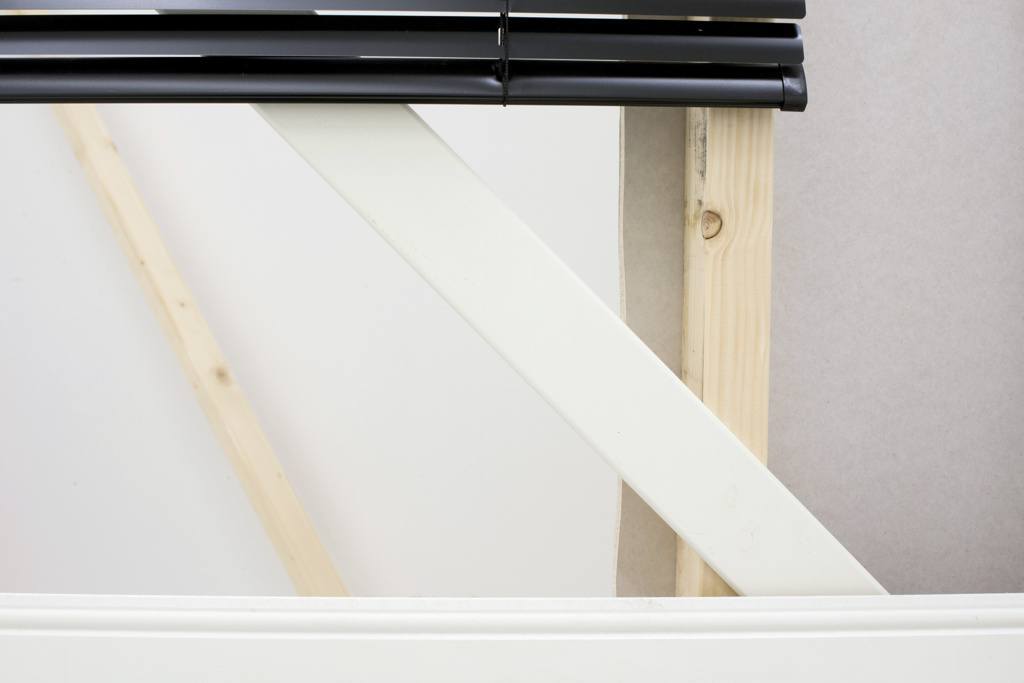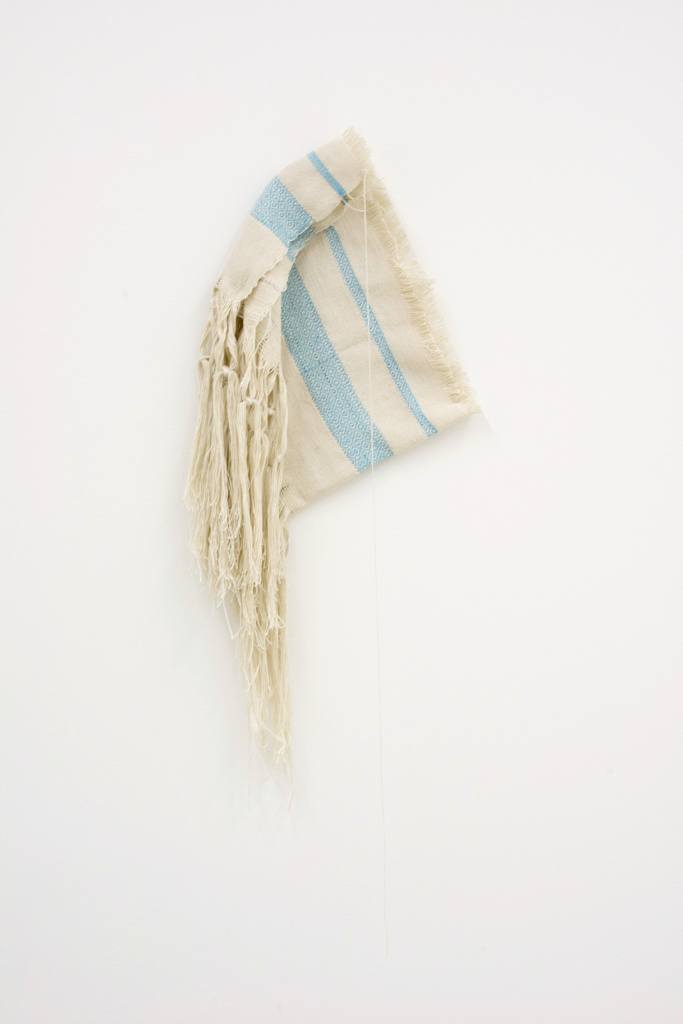I researched traditional Norwegian and Scandinavian patterns. I was seeing many stripes along with alternating patterning. One pattern in particular stood out, Goose Eye. I have never used many patterns in my work. My practice has always revolved around the production of objects by hand using basic techniques. For this new work I wanted to keep the essence of my past work as well as use the influence of these traditional textiles. Since I'm not too familiar with patterning I used that to my advantage. I decided to set limits in place within my production using my mistakes in the weaving process. As I worked, every mistake I made triggered a change in pattern and color. These events yielded a minimal horizontal composition emulating a recording of time and labor that leaves a sculpture with a reference to how history builds on itself in a random and sometimes chaotic way— a series of cause and effects. LRC: It’s almost a sort of automatist action, and performative in terms of the composition being made almost unconsciously. It’s all the mistakes that determine the switching. There’s no plan, which one can interpret like history unraveling. In a way, things just happen and you react to them. FT: The mistakes have always been very prominent in my past canvas works; I always leave the mistakes in everything that I weave, leaving that human element. Since I was seeing all of these stripes along with patterning which I didn’t know how to technically do, I knew these mistakes were going to happen. One interesting component that happened was that as I worked I was getting better at the patterning. The spaces at the end got larger. LRC: The way that our working processes are totally different is something that interests both of us about our practices. Frances has been preparing and working so much beforehand, while I am the complete opposite. I began my process upon arriving in Stavanger. I went around looking and researching, photographing and understanding the surrounding architectural structures. It was interesting to see how much they resemble all of the research I’ve done in countries like France, Italy and different places in the States. There are so many links and resemblances but there are also small differences. The way that I’m working is that I put the surfaces and components that come out of domestic architecture together, in a way that they can have a conversation with each other to create a composition. These elements contain markers for a larger economic system and systems of distribution. What my work revolves around is how established systems affect how non-artistic people express themselves through their surroundings. And how these sizes, shapes and colors are being decided by larger systems separate from themselves. In a sense I become a sort of pacifist-activist in my work, because I allow the colors that are predetermined by an industry and the parameters that are predetermined by an industry to dictate the sizes, shapes, shades and tones of the work. After finding all the materials I organize them into a composition. I normally try not to alter anything. I don’t paint things, customize or sketch out any grand plan – I basically try to let the materials tell me what it is they want me to do. I'm similarly just making decisions within what is available to me. I like using blinds because they represent something – they are domestic objects that divide space, but I like the linear quality that they offer within the composition and the rhythm they create. I have been wanting for a long time to use black blinds, but I always rule them out because they are not a part of the common color palette available back at home. But all of a sudden here in Stavanger, they became more obvious – black seems to be more incorporated into the common color palette here.


